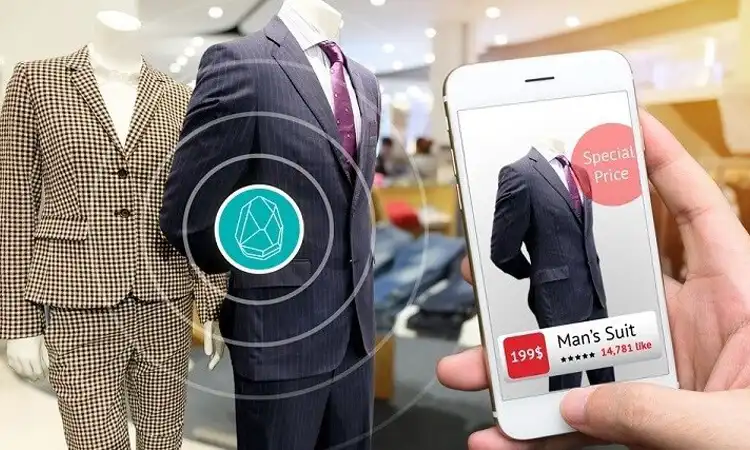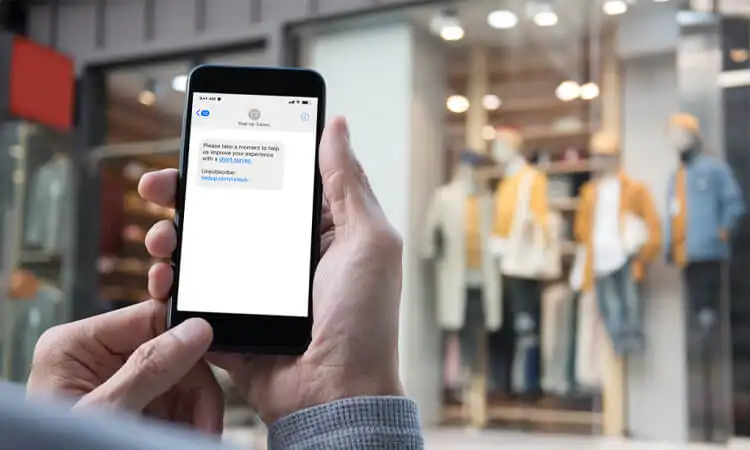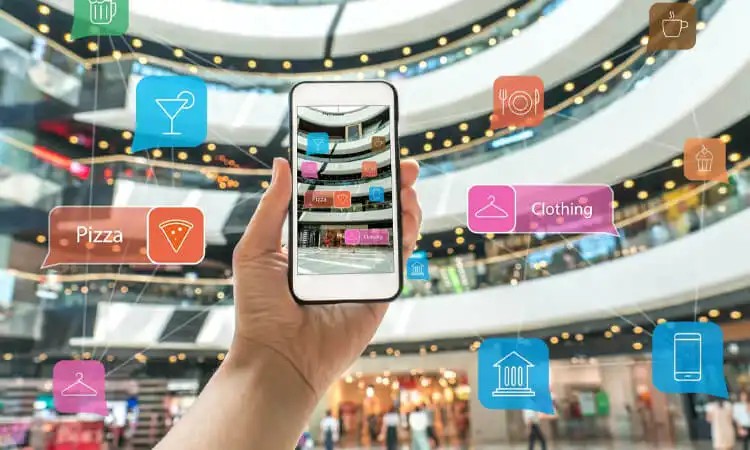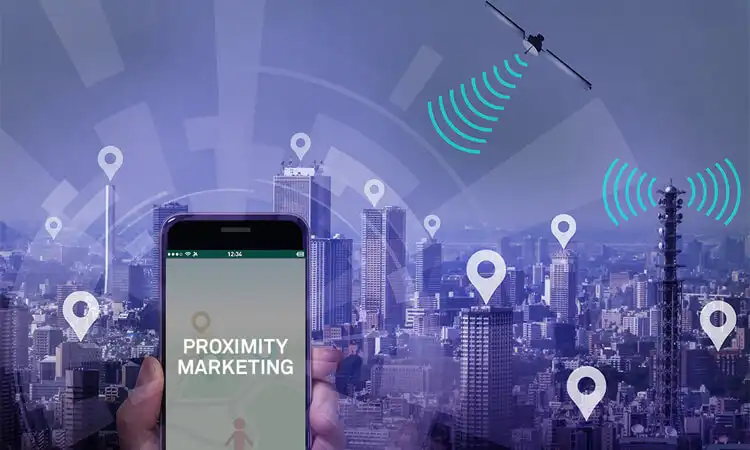In today’s world, businesses constantly search for new and innovative ways to reach their target audience. One of the most promising methods of targeted advertising is proximity marketing. Proximity marketing is a form of location-based marketing that uses technology to target customers in a specific geographic location. Mobile proximity marketing has become increasingly popular in recent years, thanks to the rise of mobile devices and the increasing availability of location data. This blog post will discuss how proximity marketing works, its benefits, and how businesses can implement it.
What is Proximity Marketing?
Proximity marketing, also known as proximity-based marketing or mobile proximity marketing, is a marketing strategy that uses Bluetooth beacons and other devices to target potential consumers based on their physical location. By leveraging geofencing and GPS tracking, businesses can send personalized advertisements, promotions, and messages to consumers who are near their location. This approach aims to entice consumers to make a purchasing decision in the immediate future by offering relevant and timely offers.
The global proximity marketing market size is expected to grow from $10.6 billion in 2020 to $52.4 billion by 2026 at a Compound Annual Growth Rate (CAGR) of 31.4% during the forecast period. This growth is due to the effectiveness of proximity marketing in increasing customer engagement and loyalty. Businesses can use proximity marketing tools such as a proximity marketing app to define and execute their proximity marketing campaigns. Companies use Bluetooth proximity marketing to connect with potential customers in real-time. These technologies can also help them deliver relevant, personalized marketing messages to drive traffic and increase sales.
How Proximity Marketing Works
Proximity marketing works by sending messages or notifications to customers’ smartphones when they are within a certain distance of a business location. This is done through the use of beacons, which are small devices that emit a signal that smartphones can detect.

When a customer comes within range of a beacon, the beacon will send a signal to their smartphone. This signal will then trigger a notification or message on the customer’s phone. The message can be a promotion, a discount, or any other type of personalized offer.
What are the Four Elements of Proximity Marketing?
Proximity marketing is a strategy that allows businesses to reach potential customers based on their location. The four key elements of proximity-based marketing include location, context, timing, and personalization. These elements are crucial for businesses to consider when developing their marketing strategies in today’s ever-changing consumer landscape. While the traditional “4P” rule of marketing (product, price, place, promotion) may still be relevant in some cases, proximity based marketing offers a more targeted and personalized approach that can help businesses reach customers where and when it matters most.
Benefits of Proximity Marketing
Proximity marketing offers several benefits to businesses, including:
- Increased engagement: proximity based marketing allows businesses to engage with customers in real time, which can lead to increased engagement and brand loyalty.
- Personalization: proximity based marketing allows businesses to send personalized messages and offers based on a customer’s location and preferences.
- Cost-effective: proximity based marketing is a cost-effective way to reach potential customers, as businesses only need to invest in a few beacons to cover a specific area.
- Improved customer experience: proximity based marketing can enhance the customer experience by providing relevant and timely information and offers.
Proximity Marketing Examples: How Businesses Use NFC and Digital Proximity Marketing
NFC Proximity Marketing and digital Proximity Marketing are two powerful tools that businesses can use to engage customers and provide personalized experiences. Here are some examples of how different industries are using these technologies:

Retail
Retailers can use beacons for NFC proximity based marketing to send customized notifications to customers as soon as they enter the store. These notifications can include personalized offers, product recommendations, and directions to specific products. Digital proximity based marketing can also be used to send push notifications to nearby customers, encouraging them to visit the store and make a purchase.
Hospitality
Hotels can use NFC proximity based marketing to notify guests as soon as they enter the lobby. These notifications can include information about the hotel’s amenities and services and customized offers for room upgrades or spa treatments. Digital proximity based marketing can also be used to send push notifications to nearby guests, inviting them to visit the hotel restaurant or bar.
Events
Event organizers can use NFC proximity based marketing to send notifications to attendees, providing them with real-time information about the event schedule, speakers, and activities. These notifications can also include personalized recommendations for exhibitor booths or sessions matching the attendees’ interests. Digital proximity based marketing can also be used to send push notifications to nearby attendees, encouraging them to participate in on-site activities or visit specific booths.
How to Use Proximity Marketing to Improve Customer Engagement?
Proximity marketing is a powerful way to engage customers and encourage them to take action. By using location-based messaging, you can send customized messages to customers when they’re near a specific location. For example, if you own a store, you can send customers current promotions and deals when they enter your store. This can help increase sales and customer satisfaction.

Bank of Ireland (BOI) uses proximity-based messaging to keep its customers informed while they’re traveling. For instance, if a BOI customer is at an airport, they’ll receive messages with tips on using their bank account while traveling and special features available. This is extremely helpful because it prepares customers in advance in case of an emergency.
Here are some other ways to use proximity-based messaging:
- Remind customers when they qualify for an account upgrade and offer upgrades while they’re in the bank or store so they can speak to a teller or manager about the upgrade.
- Update customers on changes to hours of operation, but limit the number of messages you send to avoid overwhelming them.
- Remind customers of loyalty points they qualify for, send them points balance reminders and offers they qualify for, and include a CTA button to claim the reward.
To make the most of proximity based marketing, use beacons placed throughout your store or bank to set threshold limits so that messages are only triggered at timed intervals. Additionally, leverage the data you collect and store in your CRM system to build proximity marketing campaigns and populate messages with customer information. This can help businesses optimize their marketing efforts, increase customer engagement, and ultimately drive more revenue.
Challenges of Proximity Marketing
While proximity marketing offers many benefits, there are also many challenges that businesses must consider, including:
- Privacy concerns: proximity based marketing relies on collecting data on consumers’ locations, which can raise privacy concerns. Businesses must be transparent about collecting and using this data to avoid alienating their customers.
- Technical issues: mobile proximity marketing relies on technology such as Bluetooth beacons and GPS tracking, which can be unreliable or difficult to set up. Businesses must be prepared to invest in the necessary infrastructure to ensure their proximity marketing campaigns succeed.
- Over-saturation: proximity based marketing can quickly become overwhelming if businesses send their customers too many messages or promotions. Businesses need to strike a balance between providing value to their customers and not overwhelming them with too much content.
Why is Proximity Marketing the Future of Advertising?
Proximity marketing is the future of advertising because it allows businesses to reach consumers in a more targeted and personalized way. Companies that obtain this location data can send messages and promotions about consumer interests and needs. This type of advertising is also more effective because it reaches consumers at the right time and place when they are most likely to make a purchase.
proximity based marketing is also cost-effective for businesses. Unlike traditional advertising methods such as TV and radio ads, businesses can target a specific audience with proximity marketing, reducing the cost of advertising and increasing the return on investment.
What are the Best Proximity Marketing Beacons on the Market?
You have several options if you’re looking for the best proximity marketing beacons. Some of the top beacons in the market include Kontakt.io Beacon Pro, Estimote Proximity Beacons, Gimbal Proximity Beacon, BlueCats Beacon, and Radius Networks RadBeacon. These beacons offer unique features such as long battery life, high accuracy, and easy integration with existing systems. However, to find the best proximity-based marketing beacon for your business, you need to consider your specific needs and use case.
For instance, if you’re looking for a beacon with high accuracy and long battery life, the Kontakt.io Beacon Pro might be the best option. On the other hand, if you’re looking for a beacon that integrates easily with your existing systems, the Estimote Proximity Beacons might be the best fit. Similarly, if you’re looking for a beacon that is easy to deploy and manage, the Gimbal Proximity Beacon could be the ideal choice.
Proximity marketing is a powerful tool businesses can use to target their audience more effectively. By using location-based technologies such as Bluetooth beacons and geofencing, businesses can send targeted messages, promotions, and advertisements to consumers close to their businesses. While there are challenges to implementing proximity marketing campaigns, the benefits are clear: increased engagement, improved customer experience, increased foot traffic, and better data insights. As such, mobile proximity marketing will likely become increasingly important in the marketing mix in the coming years.








